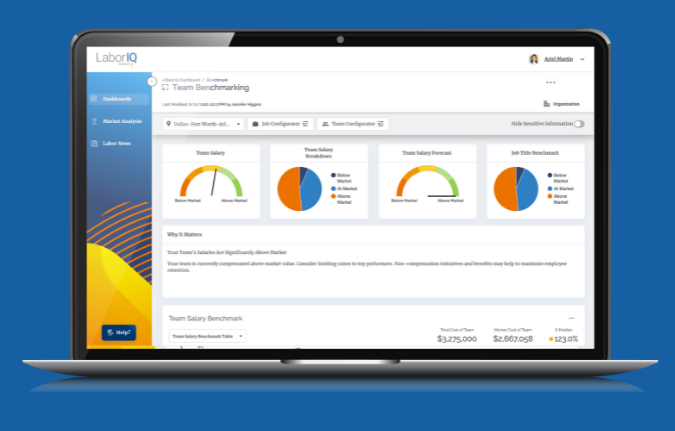At the time of writing, at least eight US states have pay transparency laws. These laws cover 44.8 million people, accounting for 26.6% of the US labor force.
These states are as follows:
- California
- Colorado
- Connecticut
- Maryland
- New York
- Nevada
- Rhode Island
- Washington
On top of the above, a further 16 are reputed to be considering implementing their own pay transparency legislation.
Add to this the proposed Salary Transparency Act, which, if passed, would require employers to disclose pay ranges for internally and externally recruited job postings; it’s clear there's a slow trend toward pay transparency.
The hope behind this surge toward salary transparency is to address pay inequality at a national level.
Yet, despite this, more than half of US workers are subject to pay secrecy policies.
Businesses may be reluctant to disclose salary information for various reasons:
- They might pay different rates to workers undertaking the same job
- There might be salary inequality between genders, races, orientations, etc.
- It saves the company money.
But, now that we're seeing a gradual shift towards transparency, we decided to speculate about some of the risks involved to businesses and employees where there's no pay transparency. So hopefully, by the end of this blog post, we'll better understand why pay transparency legislation is blazing the trail.
There's lots to discuss, so let's dive in!
The Gender Pay Gap and Legal Risks
The sad fact is that, on average, women earn 83.7% of what men earn, with women more likely to work in lower-paid jobs that offer fewer benefits. Understandably, a working environment where men are paid more simply because of gender can foster resentment and perpetuate inequality.
Needless to say, companies that can't explain such a pay differential are at risk of falling foul of gender-based discrimination.
For example, Novartis Pharmaceutical was found liable for gender discrimination concerning pay, promotion, and pregnancy matters. As a result, 12 former sales reps were awarded $3.36m in compensation. Plus, a class action of 5,600 women was awarded an additional $250m in punitive damages.
Of course, when companies have to disclose their salary information, it's not as easy for businesses to turn a blind eye to bias, whether it's deliberate or unintentional.
Higher Staff Turnover
It’s a given that it costs businesses more to recruit someone new than it does to retain existing staff. The stats vary, but an Indeed study found it can be anywhere between $4,000 to $20,000, not including salary and benefits.
Unsurprisingly, employees may feel exploited and undervalued due to pay discrepancies and a culture of secrecy around salaries. Needless to say, this could hinder job satisfaction and engagement, which could boost turnover.
In contrast, businesses that show steadfast commitment to pay transparency could find the opposite is true. In fact, one study suggests that enterprises practicing pay transparency could enjoy up to a 10% boost in productivity.
Attracting Less Talent
Job seekers consider various factors amid their job hunt: company culture, career prospects, flexibility, etc., However, the most significant driver is compensation.
One study notes that salary is the first thing candidates look at, with two in three more likely to apply for a job where a salary is shown.
The key takeaway? If your business is suffering from a skills shortage, you need to attract as many high candidates as possible to plug the gap. According to the stats, one way to boost the likelihood of achieving this is to showcase your salaries in your job ads. It really is as simple as that.
This is especially true in a landscape where employers are still reeling from the impact of the pandemic and the Great Resignation. As a result, employers can ill-afford to attract less talent.
In fact, even as recently as 2022, Americans were still walking away from their jobs, with a historic high of 50.5 million quitting that year alone (although most were moving onto better-paid pastures).
In addition, businesses keen to attract Millennials and Gen Z employees should note this cohort has clear views on pay transparency. For example, Adobe’s Future Workforce Study found that 85% of recent graduates are less likely to apply for a job where a salary isn’t listed. Not just that, but two-thirds want pay transparency across the board, expecting to know what their CEO makes too.
In such a climate, employers looking to attract new talent would be wise to adopt a more transparent approach to pay, especially if they want to attract younger workers.
Poor Employer Branding
Businesses dragging their heels concerning pay transparency may find it damages their employer brand. We’ve already noted how some candidates are reluctant to apply for jobs with no salary listing. But, building on that, companies continuing this practice might risk significant long-term harm to their reputation, with candidates considering them cheap. In fact, a Deloitte report that looks at how pay transparency impacts retention states that:
‘Late adoption could damage your organization’s employment brand. Employers that resist transitioning to salary transparency may risk damaging their reputations and reducing their volume of job applicants.’
Wasting Time on Salary Negotiations
Where there’s no pay transparency, hiring managers will inevitably waste time on arduous salary negotiations. The average time for such brokering varies but can be anywhere between 5 and 10 working days. In contrast, pay transparency eradicates the need for such negotiations because everyone knows where they stand from the get-go.
Final Thoughts
By adopting a proactive approach to compensation transparency, businesses are better prepared to comply with looming pay parity legislation while remaining competitive in a tough labor market. As discussed, the stats speak for themselves; pay parity is way better optics.
However, to confidently reveal your company’s salary structure to the world, you’ll need to undertake a salary audit first to ensure you’re paying a competitive and fair wage across the board.
.jpg)








